Review for My Neighbour Totoro - Double Play: The Studio Ghibli Collection
Introduction
When a company like Studio Ghibli starts restoring and reissuing its back catalogue on Blu-ray, you can bet that every new release is awaited with equal anticipation and fervour. After all, Studio Ghibli’s film output has been critically acclaimed the world over, and even the lesser titles have depth, quality, and originality that put other animation companies in the shade. But even in the rarefied elite of Ghibli’s filmography, there are some titles that are more equal than others. Fans have been awaiting My Neighbour Totoro on Blu-ray with special attention, not least because in 1988, this was Miyazaki’s second film for the studio, and not only because its title character is now Ghibli’s logo, and a source of much merchandising. There’s also the small issue that even after all these years, many people still consider My Neighbour Totoro to be Ghibli’s finest film. The Blu-ray now comes to the UK as part of a dual play release with the DVD, with a spiffy new 1080p transfer and a host of new extra features.
Sisters Satsuki and Mei move with their father to the country to be closer to the hospital where their mother is recuperating. Just exploring their new house and the gardens around it is a grand adventure, but it’s when Mei follows a trail of acorns to a giant tree that they discover the true magic of their new home. For behind their house resides the guardian of the forest, Totoro.
Picture
My Neighbour Totoro gets a 1.85:1 widescreen transfer on this Blu-ray disc at the 1080p resolution. The disc is sourced from Australia’s Madman Entertainment, and they have a policy of applying light DNR to their Ghibli HD discs to reduce film grain. That, on top of Studio Ghibli’s restoration reveals an image that has cleaned up a treat, and I noticed no issues such as aliasing or macroblocking in the image. The reduced film grain may be a contentious issue for some, but I find the transfer really quite pleasant, with the gentle colour scheme, the fluid animation, and the detailed backgrounds all coming across with beautiful effect. There’s just enough grain left, and the odd moment of flicker, to remind you that this is a film source.
This is noticeably an early Ghibli feature, and that does tell in the animation, which as you would expect from 1988 is a fully hand crafted affair. The character designs are simple but effective, yet the detail in the animation of the characters is sublime. The world design is rendered in bold colours and with vivid lighting, but interiors get a level of detail and warmth that really brings them to life. In one scene early on when the sisters are exploring their new house, you can see a muted reflection in the surface of a wooden floor that gives it a sense of reality that even modern anime have a hard time emulating.
Sound
You have the choice between PCM 2.0 stereo Japanese and English (with the English dub the more recent Disney dub), with optional translated English subtitles accompanying the Japanese audio. There are two separate subtitle tracks on this disc, but they are the same track repeated over. I opted for the Japanese audio and found it to be more than acceptable. The dialogue is clear throughout, without signs of age or distortion, and the film’s music comes across well. In something of an oversight, the film’s theme songs aren’t subtitled.
Extras
The film gets presented on a silent slideshow menu screen, with an animated menu bar.
As is usual for Ghibli discs, you get the picture in picture storyboards, here presented in the bottom right of the screen.
There are four featurettes, interviews with director Hayao Miyazaki and producer Toshio Suzuki, Creating My Neighbour Totoro (3 mins), Creating the Characters (4 mins), The Totoro Experience (2 mins), and Producer’s Perspective: Creating Ghibli (1 min), which all look at the history and creation of the film, and what it meant to Ghibli. These four featurettes are presented in 1080p resolution, and it’s worth keeping an eye out for some clips of Totoro before restoration and DNR have been applied.
The Locations of Totoro lasts 29 minutes and is presented in 1080i 60Hz. It’s an extract from a longer Japanese “The Scenery in Ghibli” Documentary, and encompasses those bits that focus on My Neighbour Totoro. It takes us to those locations that served as inspiration to scenes in the film, as well as showing some of the legacy of the movie and how Totoro has come to represent and help keep alive the old-fashioned, rural country practices.
Scoring Miyazaki lasts 7 minutes (1080p), and Toshio Suzuki bookends a brief interview with composer Joe Hisaishi, who provides the music to many of Ghibli’s films. Incidentally, there are clips here of the HD Kiki’s Delivery Service that made me weak at the knees. It looks fantastic.
Behind the Microphone is the old featurette with the English dub voice cast, up-scaled to 720p. This lasts 6 minutes.
You get the two textless credit sequences in 1080p HD, the theatrical trailer for Totoro and Grave of the Fireflies (they were released as a double bill), and trailers for other HD titles in the Ghibli collection, Arrietty, Ponyo and Laputa.
Looking through the ANN encyclopaedia, it turns out there was a sequel of sorts to Totoro, a short animation made in 2003 called Mei and the Kittenbus, and it’s a shame that couldn’t be sourced as an extra for the Blu-ray.
Conclusion
My Neighbour Totoro is one of those films that are critic-proof, and nothing I’m going to say here will persuade, or dissuade you from buying this release. All you really need to know is that the Blu-ray is up to Studiocanal’s usual standards, and is very watchable, and it comes with some nice extra features too. For me, My Neighbour Totoro is a perfect little film, a nice, slice-of-life family entertainment that appeals to all ages. It’s entertaining, heart-warming, enchanting and utterly memorable, and it’s easy to see just why it is the favourite Ghibli film for so many fans. It’s not quite my favourite Ghibli, as I always find the story a little ephemeral, lacking in depth for my liking, but that by no means reflects on the quality of the film itself.
For older viewers it just glows with nostalgia, and in this modern age, it’s a vicarious nostalgia for a pre-technological age. The film is set in the fifties, before everyone had television, and children had to amuse themselves by actually stepping outside the house. It’s set in a countryside community, the sort where doors are never locked, and where everyone knows everyone else. It harks back to a simpler time when concerns were few, and life was easier. At least that’s the way it seems to us now, at the beck and call of our mobile phones and broadband connections. There’s a warmth and joy to this idyll which is very appealing. There’s also the memories of childhood evoked, the joy in exploring, learning and playing, that Satsuki and Mei experience here which will resonate with all who watch the film.
It’s the way that Miyazaki captures the perspective of Mei and Satsuki as they explore their new countryside home that will resonate most with younger viewers, as they share in their grand adventure. The rickety old house that the family moves into is just the sort of building with hidden nooks and crannies that children love to play in, and he captures the sense of wonder with which the girls play in the house in a way that lets the viewer share in the experience. It’s the same with the way that Mei explores the gardens outside, with her discovery of Totoro reflecting the wondrous imaginations that we all have as children. He also captures the fear, the loneliness and confusion that children feel when a parent is absent and unwell, and at first the new house is a welcome distraction for Mei and Satsuki from their mother’s illness. That distraction ends when they hear that she won’t be coming home when promised, and the sense of betrayal by the world is one that everyone must have felt at one time.
My Neighbour Totoro is a great film, one of Ghibli’s finest, and one which effortlessly succeeds as family entertainment in a way that many other films have to strain at the seams to achieve. It’s not my favourite Ghibli film, as I find that it’s less that it tells a story than it captures a moment in time, presents a warmth and nostalgia that is more evocative than informative. For the latter there are other Ghibli films out there with much stronger stories. But if ever I want 90 minutes of pure happiness in celluloid form, My Neighbour Totoro will be the first film that I choose to watch.
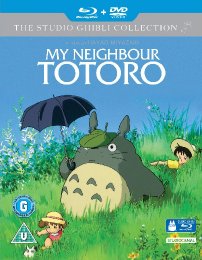






































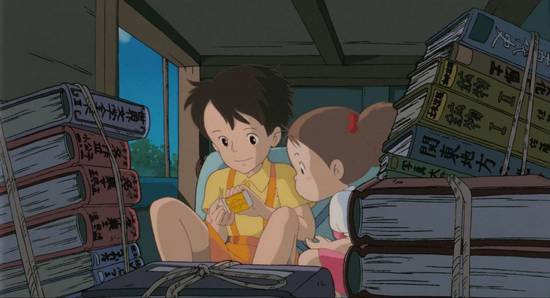
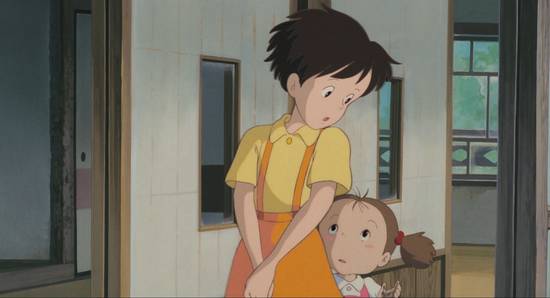
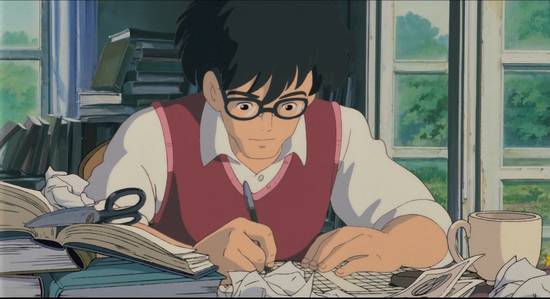
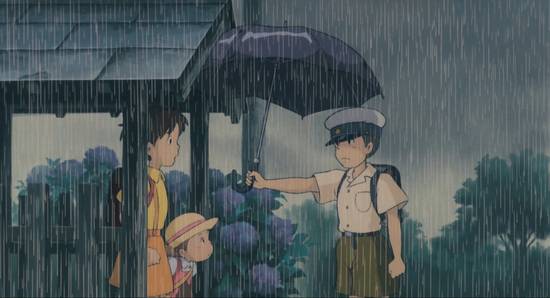


Your Opinions and Comments
Be the first to post a comment!